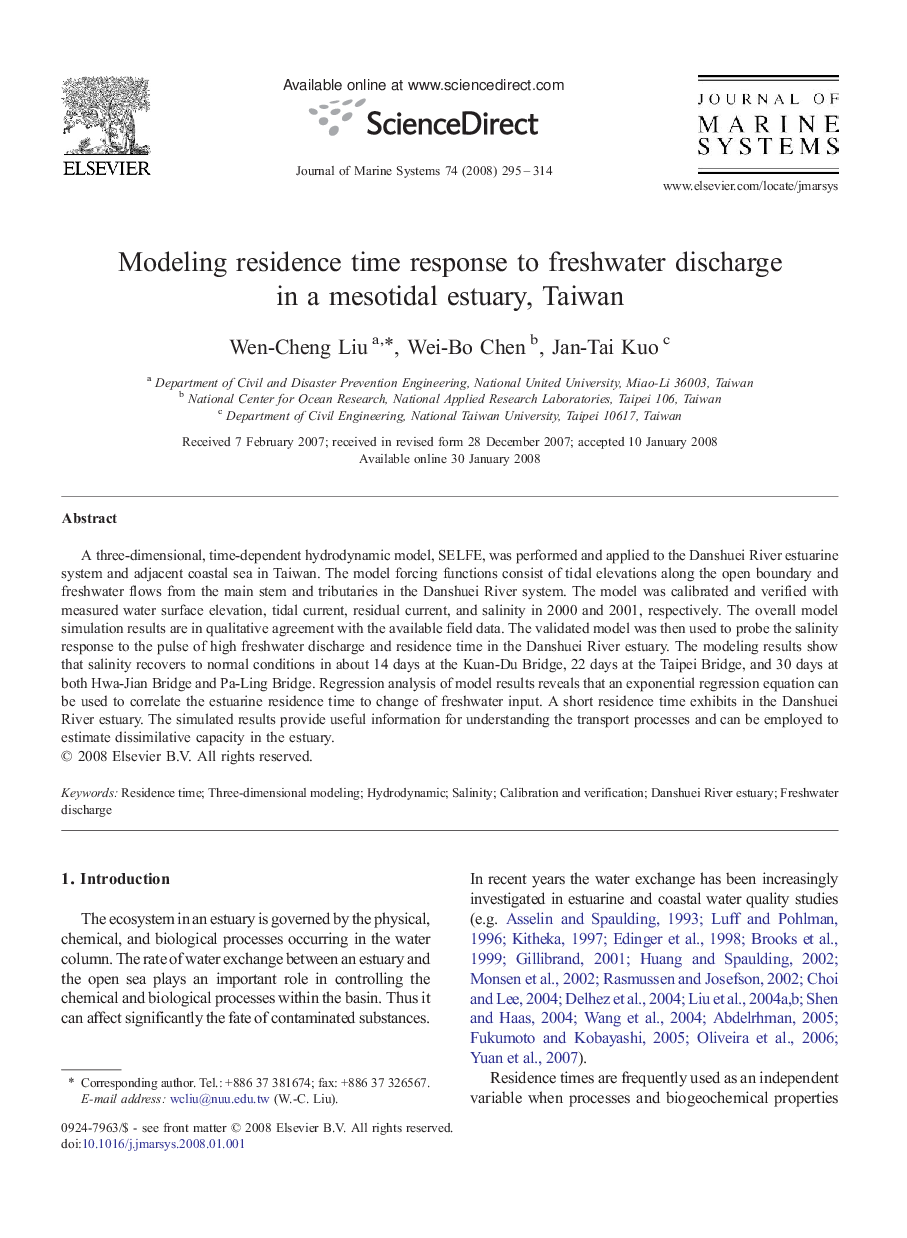| Article ID | Journal | Published Year | Pages | File Type |
|---|---|---|---|---|
| 4549001 | Journal of Marine Systems | 2008 | 20 Pages |
A three-dimensional, time-dependent hydrodynamic model, SELFE, was performed and applied to the Danshuei River estuarine system and adjacent coastal sea in Taiwan. The model forcing functions consist of tidal elevations along the open boundary and freshwater flows from the main stem and tributaries in the Danshuei River system. The model was calibrated and verified with measured water surface elevation, tidal current, residual current, and salinity in 2000 and 2001, respectively. The overall model simulation results are in qualitative agreement with the available field data. The validated model was then used to probe the salinity response to the pulse of high freshwater discharge and residence time in the Danshuei River estuary. The modeling results show that salinity recovers to normal conditions in about 14 days at the Kuan-Du Bridge, 22 days at the Taipei Bridge, and 30 days at both Hwa-Jian Bridge and Pa-Ling Bridge. Regression analysis of model results reveals that an exponential regression equation can be used to correlate the estuarine residence time to change of freshwater input. A short residence time exhibits in the Danshuei River estuary. The simulated results provide useful information for understanding the transport processes and can be employed to estimate dissimilative capacity in the estuary.
